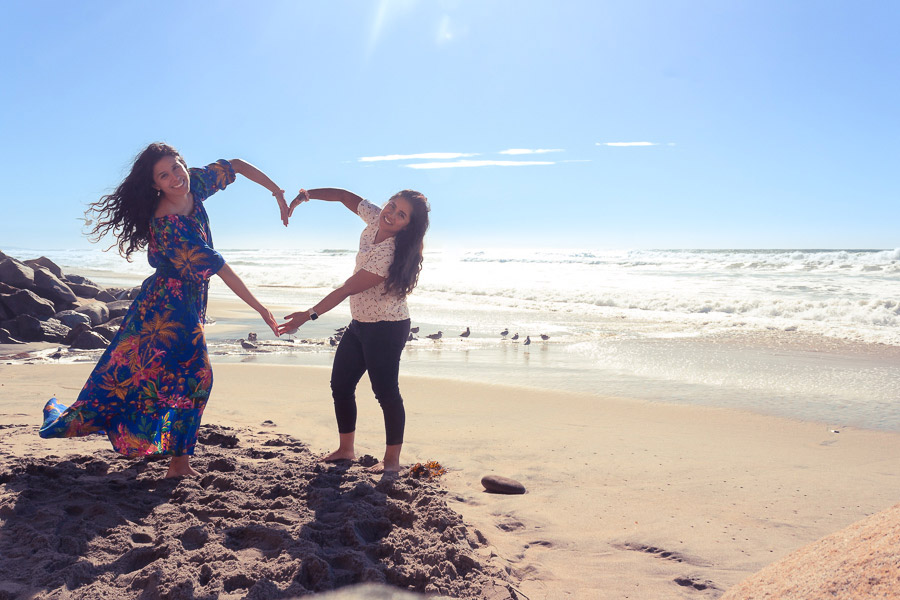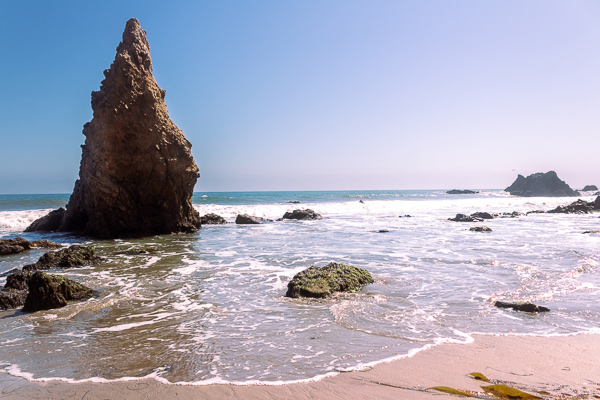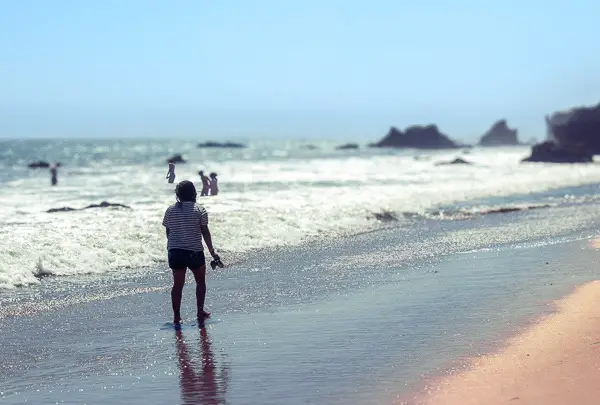Tanning at the beach is often done by beachgoers.
Often debated as to whether this practice is worth doing is a controversial topic.
It is important to know the risks associated with tanning at the beach.
For those who want to learn how to tan at the beach safely – we got you covered!
We put together our top 12 best practice tips to help you with tanning at the beach in the safest way possible.
Let’s dig in!
12 Tips for Tanning at the Beach:
- Moisturize that Skin
- Hydrate
- Sunscreen
- Your Body Limit
- Avoid Hottest Times
- No Perfume
- Don’t Forget Eyes, Scalp
- Reapply Sunscreen
- Move Body
- Protective Clothing
- Avoid Towels
- Aftercare
*This post was originally published in 2020 and updated in 2022.
12 Tips for Tanning at the Beach

Tanning at the beach is quite different than indoor tanning which usually takes place on a tanning bed.
One is not better than the other.
Both emit ultraviolet (UV) radiation onto your body.
Overexposure to UV radiation in the long run to the body leads to wrinkles, aging, and even skin cancer.
Some people prefer tanning at the beach to indoor tanning.
For those preferring to use natural sunlight remember that your skin is still susceptible to the sun’s rays.
But, we put together these best practices for tanning at the beach in the best safest way.
1. Moisturize that Skin

Before tanning at the beach make sure your skin is moisturized.
By this, I mean every single part of your body!
This normally is done in the mornings and night times after you shower.
If this isn’t a daily ritual for you then you should make it a priority.
Moisturizer helps protect your skin from drying along with maintaining its balance.
Though the sun is an amazing part of our lives it is also a foe on its own.
When we are outside for long periods of time the sun will dehydrate the skin.
Being outside will cause your skin to be thirsty.
It’s best to prepare it when deciding to tan at the beach by moisturizing it.
This will give it somewhat of defense against the sun.
It’s perfect for those who are skin sensitive and have conditions such as eczema, psoriasis, and rosacea.
The Era Organics Relief 13-in- Face and Body Moisturizer is also good for those who want to avoid harmful chemicals.
It’s made with organic ingredients that are safe for all skin types!


2. Hydrate

This is often an overlooked one, but it is important.
Your body is mostly composed of water.
An adult human is precisely made up of 60% water.
Fascinating!
When you decide to tan at the beach you are exposing your skin to the sun which in turn can cause dryness of the skin.
This holds more true when you are outside when temperatures are high.
Your skin is prone to lose its moisture and proteins like collagen.
Collagen keeps your skin firm thus decreasing wrinkles.
Make sure you are hydrated before tanning at the beach.
3. Sunscreen is your best friend while tanning at the beach
This one may be a no-brainer, but often some people assume that since they are tanning at the beach why wear sunscreen?
If we go back for a second and see what happens to our skin during sun exposure we can better answer this question.
When our skin comes in contact with the sun our bodies will start to produce melanin.
Humans have 3 types of melanin:
- Eumelanin
- Pheomelanin
- neuromelanin
The amount of melanin in our bodies is determined by our genes.
Hence, fair-skinned individuals will often carry more melanin than fair-skinned individuals.
Melanin in a sense acts as a sunscreen.
It doesn’t have the properties of an SPF 30 (sun protection factor) sunscreen, but it tries its best to do what it can to protect your DNA from ultraviolet (UV) radiation.
The longer you’re exposed to the sun the more melanin will be produced giving you that “suntan or sunburn look.”
Basically, at this point, your skin is suffering from sun damage.
4. Know your body’s limit

As previously mentioned the amount of melanin will vary amongst different ethnicities.
For instance, dark-skinned individuals tend to produce more melanin than fair-skinned individuals.
This means that for dark-skinned individuals it takes a longer time than a fair-skinned individual to have sun-induced damage.
The reason being is that fair-skinned individuals don’t produce as much melanin that is able to help absorb the UV radiation.
Understanding where your skin-color stands can give you a better idea of what is your tolerance limit to the sun.
In the end, the sun doesn’t discriminate against color over time long periods of exposure will lead to sunspots, wrinkles, and even cancer.
5. Avoid Tanning at the BEach in the Hottest Times

Research tells us that at certain times throughout the day the magnificently radiant sun is known to carry its strongest UV rays.
The time of the day along with the season and even destination all play a role.
For instance, often between 10 am to 4 pm the sun’s rays are at their strongest.
These times are often recommended to avoid if possible being outdoors.
Summertime months such as June, July, and August are known to have hot climates which also contribute to the sun being at its strongest.
6. No Perfume while tanning at the beach

As a female, I often enjoy wearing perfume.
It smells nice and makes me happy when I wear it.
If you plan on tanning at the beach avoid putting on perfume that day.
Most perfumes carry a mixture of alcohol in them.
Sometimes when wearing perfume during sun exposure can cause Poikiloderma of Civatte (PC).
PC is when your skin becomes red and scaly.
This is more common in women because they tend to wear perfume and other cosmetics that can lead to this condition.
To be on the safe side avoid wearing perfume while tanning at the beach or any other time you plan on being outdoors for long periods.
7. Don’t forget about your eyes and scalp

While tanning at the beach we often forget to protect the eyes and the head from the sun.
This becomes even more important if you are out during the hottest times of the day.
The scalp can become sunburned.
Be sure to wear a sunhat that offers at least moderate protection and having SPF protection is just a plus.
Our favorite is the Coolibar UPF 50+ Women’s Beach Hat.

It’s lightweight, fashionable, and foldable making it a great choice to take to the beach.
In addition, your eyes are delicate as well to the sun.
Protect them while tanning at the beach by wearing sunglasses.
Make sure that the sunglasses you decide to wear at the beach are polarized such as Maui Jim Sunglasses.
Polarized sunglasses will help to reduce the glare from the sun reflecting off the water.
This is important because oftentimes we can get headaches from squinting in the sun too long.
Wearing polarized sunglasses will also help to reduce any eye fatigue and strain.

8. Remember: Reapply Sunscreen while Tanning at the Beach

Remember when you are tanning at the beach – don’t forget to reapply your sunscreen!
Most sunscreens can offer protection for up to a certain time.
For instance, wearing an SPF of 30 indicates that it will take 30 times longer for the UVB rays to penetrate your skin than not wearing any sunscreen.
The Skin Cancer Foundation suggests sunscreens that are:
- Water-resistant
- Have both UVA and UVB protection
- Minimum of SPF of 30
They mention that sunscreen should be reapplied at least every two hours.
However, when sweating or swimming it should be applied more frequently.
If you’re not sure what sunscreens are best we got you covered.
We put together a guide to the best safe vegan sunscreens for you worth owning.
9. Make sure your moving

It’s imperative to keep moving your body around to avoid it getting burnt on one side.
Setting a timer for every 30 minutes can be a reminder to change positions.
A better idea for this though is participating in a beach game with your loved ones.
If you’re not sure what games to bring to the beach we put together a list of our top 20 fun beach game ideas.
Not only are you bound to get in a workout from playing, but you can rest assured your body will be tanning evenly.
You also won’t have to worry about getting bored at the beach.
10. Wear Protective Clothing if Possible while tanning at the beach
If you’re someone who is more sensitive to the sun, wearing protective clothing while tanning at the beach might be a better option.
Long-sleeved shirts and pants made from lightweight materials that protect your skin from the sun are ideal.
Wearing a rash guard is also a great way to get protection from the sun.
Be sure to look out for the Ultraviolet Protection Factor (UPF) label such as UV Skinz UPF 50+ Racerback Swim Tank.
These pieces of clothing are specifically designed to help block UVA and UVB rays from the sun.
Wearing UV protective clothing while tanning at the beach gives you the best defense along with sunscreen in protecting your skin.

11. Avoid Using Towels

This is a bonus tip because it doesn’t necessarily have to do with sunscreen.
However, it’s important to note that towels can actually rub your skin the wrong way.
This can cause exfoliation which then leads to your skin being more susceptible to sun damage and burning.
If you must use a towel while tanning at the beach, be sure it’s a soft one.
You also want to make sure you’re not scrubbing your skin too hard.
Gently patting your skin dry is the best way to go about it.
12. Don’t forget aftercare
After heading home from the beach be sure to wash up.
This includes washing off any sunscreen, salt water, and sand that might be on your body.
It’s best to use a gentle cleanser such as Cetaphil or Dove soap bars.
You also want to make sure you’re moisturizing your skin to help it stay hydrated.
If you are sunburnt after tanning at the beach be sure to use a lotion that has aloe vera.
Which is a great natural remedy to help soothe the skin.
Applying a cool compress can also be helpful in relieving any pain or discomfort.
F.A.Q.S

How long should you tan at the beach?
There is no definitive answer to this.
It depends on your skin type, the sunscreen you’re using, and how long you want to stay at the beach.
A good rule of thumb is to start with 15 minutes and then increase the time as needed.
If you start to feel any discomfort, be sure to get out of the sun and into the shade.
What to do at the Beach while Tanning

As we mentioned before, it’s important to keep moving your body around to avoid it getting burnt on one side.
Setting a timer for every 30 minutes can be a reminder to change positions.
A better idea for this though is participating in a beach game with your loved ones.
This way you won’t have to worry about getting bored at the beach or getting a sunburn.
Do you Tan Better at the Beach?

Yes, because the water reflects the sun’s rays which then helps intensify your tan.
It’s important to note that you can still get sunburned at the beach though.
This is why it’s important to follow all the best practice tips we mentioned in this blog post.
From reapplying sunscreen to protecting your skin with clothing.
All of these things will help ensure you have a fun and safe time tanning at the beach.
Can you wear a fake tan at the beach?
You can wear a fake tan at the beach, however, understand that wearing a fake tan does not protect you against the sun.
It’s important to understand that sunscreen should be still applied to your body still before being outdoors.
Conclusion

Tanning at the beach is a relaxing activity some partake in during the summer.
Now that you have all of these 12 tips for tanning at the beach, you’re ready to get a gorgeous sun-kissed glow!
Just remember to be safe and always use sunscreen to avoid any damage to your skin.
Fake tans serve as a better alternative for those individuals wanting to avoid being out in the sun.
Not only will you be getting a tan, but you won’t have to worry about running the risk of getting sunburnt.
We hope you found this guide helpful and that you have a great time tanning at the beach!
Do you have any tips for tanning at the beach that we didn’t mention?
Let us know in the comments below! Until next time, happy tanning!













0 Comments